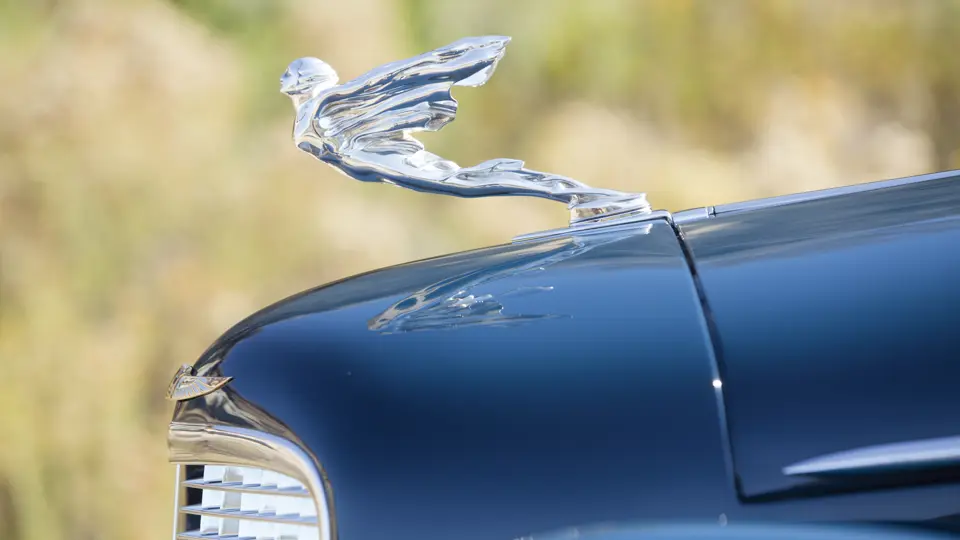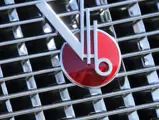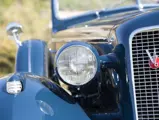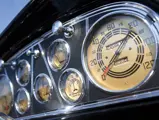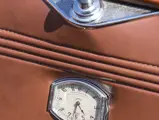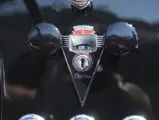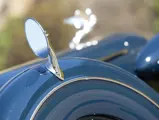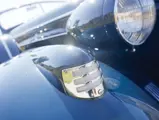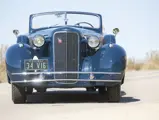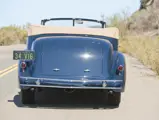185 bhp, 452 cu. in. overhead-valve V-16 engine, three-speed selective synchromesh manual transmission, independent front suspension with coil springs and three-quarter floating rear axle with semi-elliptic leaf springs, and four-wheel mechanical drum brakes. Wheelbase: 154 in.
• One of five built and three known to survive
• Purchased new by Edith du Pont Riegel
• Winner of the CCCA’s Warshawsky Trophy and Best in Class at Pebble Beach
They call it the “blue hour”: the time of day between light and dark, when light is clearest but pitch blackness will soon settle over the land. It is entirely appropriate, then, that when Edith du Pont Riegel placed her order for a V-16 Cadillac in 1934, the car would be painted Blue Hour Blue. For the first generation V-16, 1934 was the blue hour, twilight, the beginning of the end.
The model had been redesigned for the last time this year, adopting the new, in-vogue, streamlined styling with pontoon fenders, flowing bullet-shaped headlights, and aerodynamic grilles. Underneath, however, was essentially the same car introduced in 1930. Then, Owen Nacker’s magnificent porcelain and iron V-16 had been an engineering masterpiece. Its 45 degree vee, unusually narrow for the period, and a three-inch stroke allowed for a relatively compact 452-cubic inch engine with a short crankshaft, which ran on five main bearings. While other engines of the period emphasized speed and power, the Cadillac Sixteen impressed first with smoothness and silence, so that passengers were astonished to note that they were cruising along at 70 mph.
Four years later, the V-16 was still a wonderful automobile, but its chassis engineering seemed dated compared to the new products from Packard and Cord. Underneath the modern design was a four-year-old car. In addition, the Great Depression continued to clobber sales of $8,000 automobiles. As a result, V-16 sales continued to wane, except among those who continued to appreciate its “magic carpet” power and had the great funds to afford it.
Edith du Pont Riegel had both. That she had such fine taste, in 1934, at the age of only 21, speaks to her good genes. She was born into the powerful Delaware family, the great-great-great-great-granddaughter of gunpowder baron E.I. du Pont, and inherited vast funds that put her on the Forbes 400. Her life in high society included an announcement of her engagement to successful banker Richard E. Riegel Sr., which was featured in The New York Times, and she became a major patron of the University of Delaware later in life.
Mrs. Riegel’s Cadillac was the third of only five convertible sedans built on the Model 452D V-16 chassis in 1934, and it was shipped to the Delaware Motor Sales Company, of Wilmington, on June 19th. The build sheet records that the body was special-ordered in Blue Hour Blue, with options that included a divider window, enabling the car to be used as a limousine when the top was raised, as well as six wire wheels, a silver goddess hood ornament, a radio, and a flexible steering wheel.
Most interesting is the notation on the build sheet reading “Car no. 66 tag – Mrs. Edith du Pont Riegel.” It is unusual for the name of a purchaser to be printed on a Cadillac build sheet, unless the car was of very special order. It is true that the order for the Cadillac included a number of specific requests, as indicated by another notation that references detailed specifications on a separate special Fleetwood body order sheet. In this case, however, the importance of the du Pont family as it relates to General Motors is just as significant as the specification of the order. E. I. du Pont de Nemours and Company did a vast amount of business with GM, particularly through its innovative development of paint finishes, and it had large holdings in GM starting in 1914, at the direction of Pierre S. du Pont, who would also later become chairman of the board of GM. Du Pont was forced to divest all of its shares in 1957, under the Clayton Antitrust Act.
It was no doubt as stunning in 1934 as it is today, but, in the final analysis, that mattered little to Mrs. Riegel. A sport ahead of her time, she preferred to drive herself, and after three years, she decided that she disliked the handling of such a large automobile. Around 1939, the car was sold to a family friend, Fred F. Betz III.
Betz, in turn, passed the Cadillac to Akin T. Davis, of Washington, D.C., who in 1952 sold it to Roy Licari, of Alexandria, Virginia. Mr. Licari was the car’s first “enthusiast” owner, diligently recording and researching its history, and inquiring to Motor Trend about the mechanical work he performed on the car. The Licari family has graciously provided photographs of the car during their ownership and copies are included in the file.
In 1963, Mr. Licari offered his Cadillac for sale to some local friends. One of those friends, 29-year-old Louis Barnhart, of Roanoke, purchased the car, which was in Philadelphia at the time, and drove it home to the Old Dominion. Barnhart later recalled, in an article on the car, which appeared in the July/August 2007 issue of Antique Automobile, that aside from minor issues with the clutch and an unquenchable thirst for gasoline, the Cadillac made the trip to its new home trouble-free.
The Cadillac had found a good home, and the Barnhart family lovingly preserved it in its original condition for 44 years. It was an immaculate, unrestored car that was still kept in wonderful running condition when it was passed to a new owner in 2007, a prominent collector who, as a condition of the trade, had to find another V-16 to replace it in the Cadillac-focused Barnhart mews.
The new owner sent the car immediately to the well-respected firm of Stone Barn Restorations in Vienna, New Jersey, which performed a painstaking restoration, made very easy by the fact that the car was basically entirely complete and in excellent condition, with even the original paint largely unfaded. Because the car was so complete, a totally authentic restoration, correct down to the last tiny detail, was possible.
The rewards were great, including Best in Class at the Pebble Beach Concours d’Elegance, Best of Detroit at the Meadow Brook Concours, and the capturing of the prestigious Warshawsky Trophy for the highest-scoring car at the Annual Meeting of the Classic Car Club of America, the equivalent to Best of Show at that world-class event. It was the cover car of the spring 2009 issue of The Classic Car, and the subject of a feature article within.
The present owner has continued to maintain the Cadillac in flawless cosmetic and mechanical condition, and it still presents as a spectacular show-ready automobile, impressive in every detail—in bulk, in length, in its mile-deep paint, and in its beautifully tailored leather interior. It is beautifully detailed and presents as a “new” car, ready to be shown with pride amongst the best automobiles that the world has to offer—be it in the dawn light of a show field or in the soft glow of the blue hour.
Built in 1934, titled in 1935.
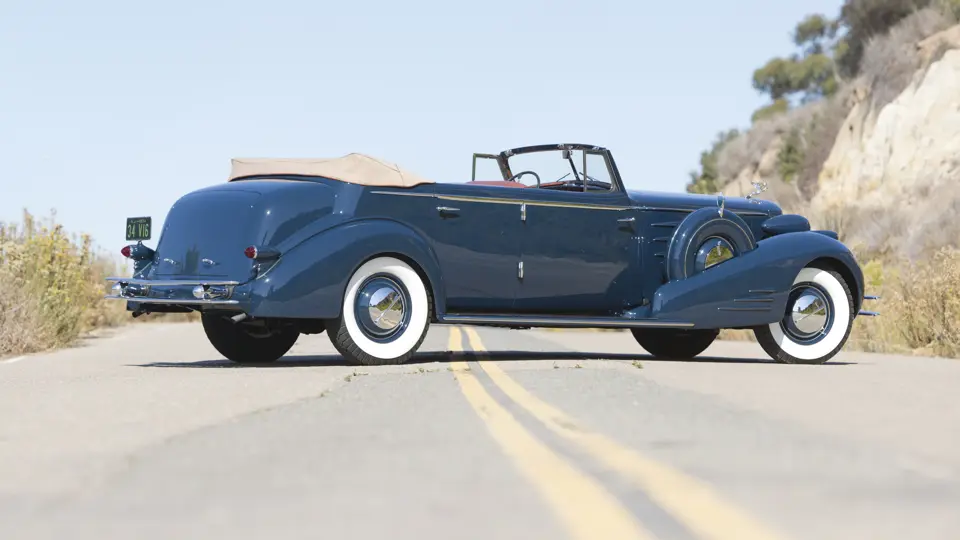

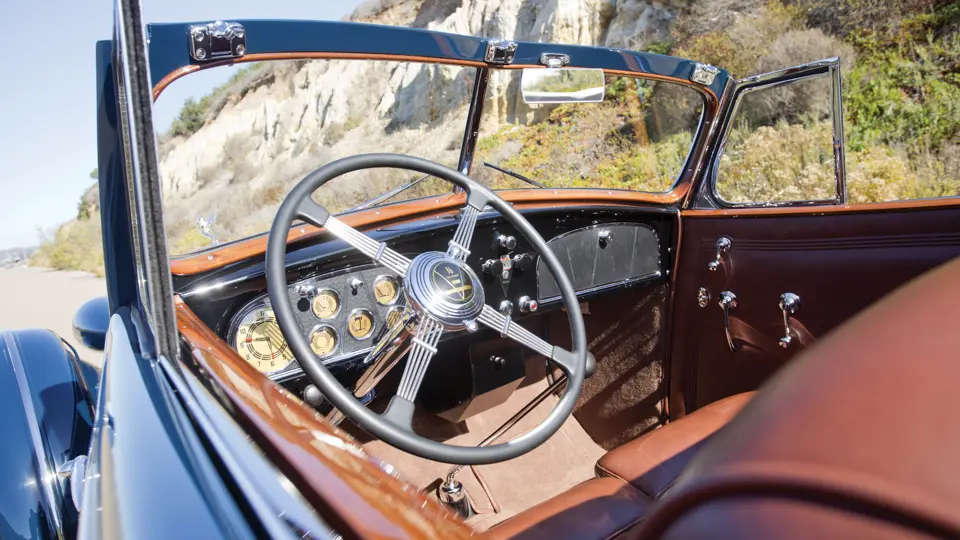


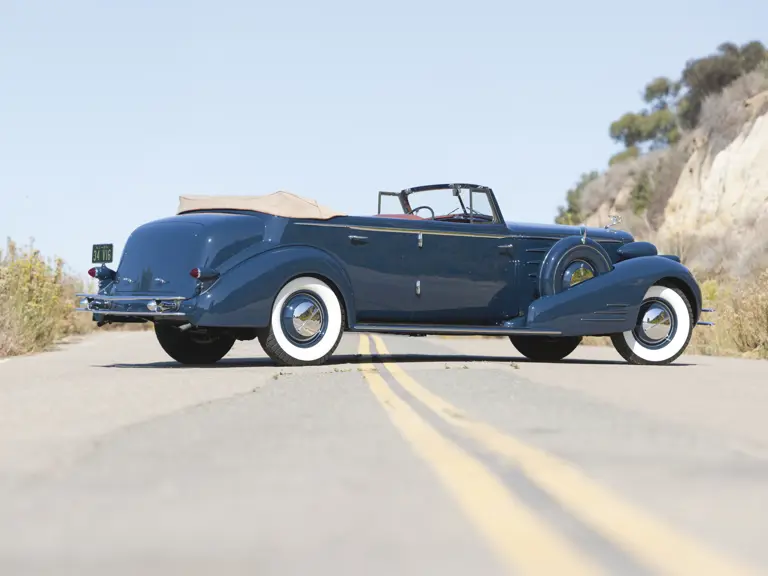

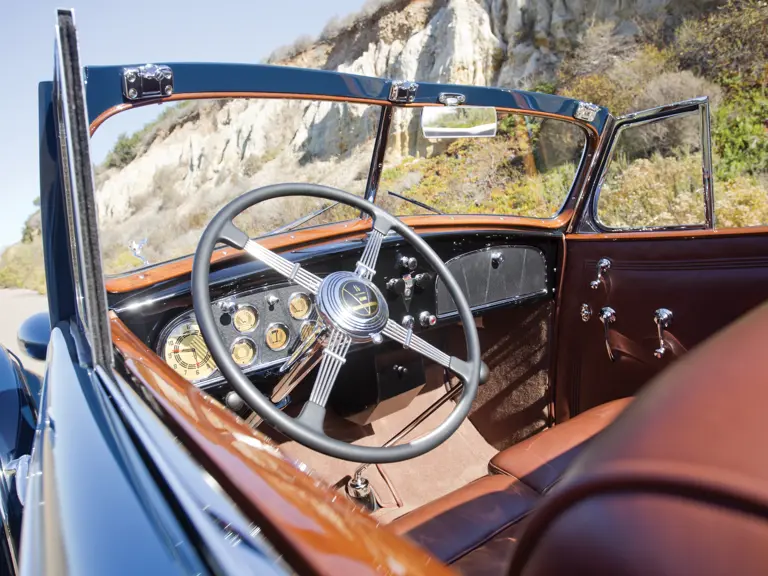
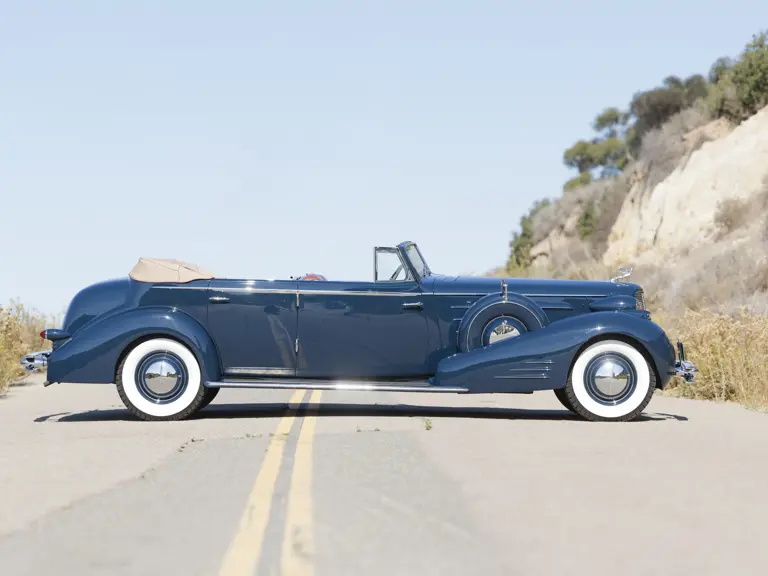
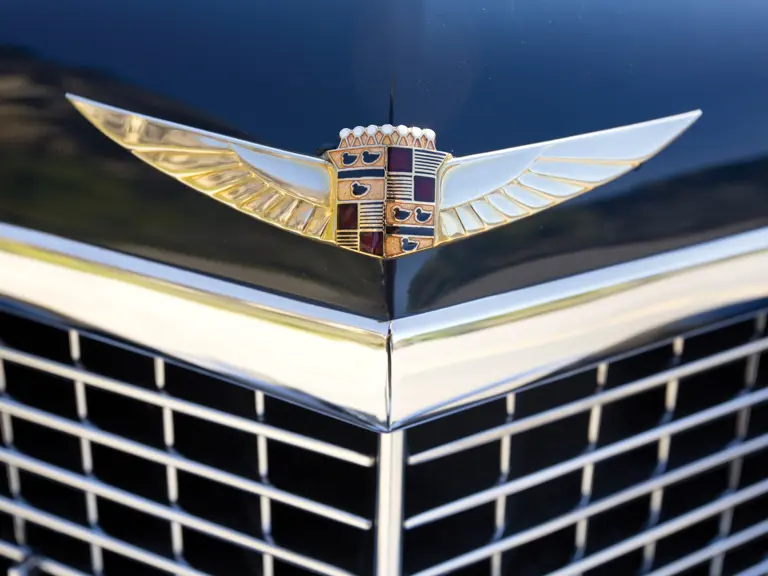

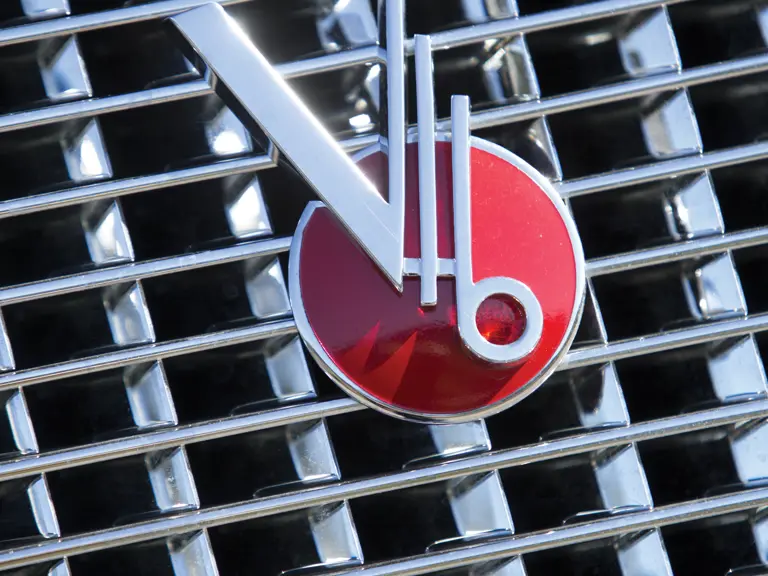
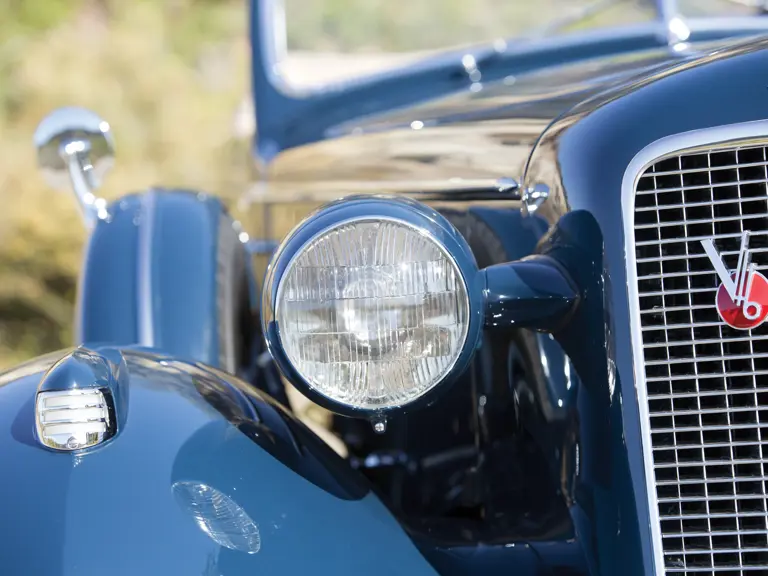


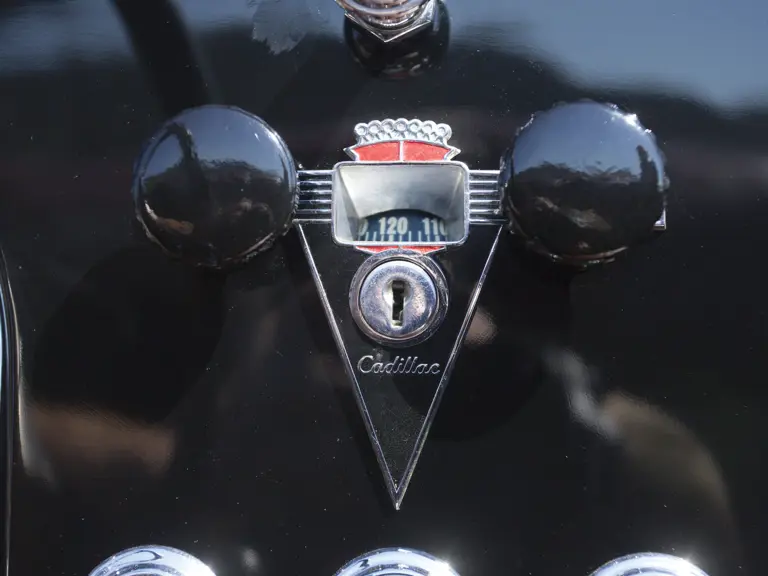
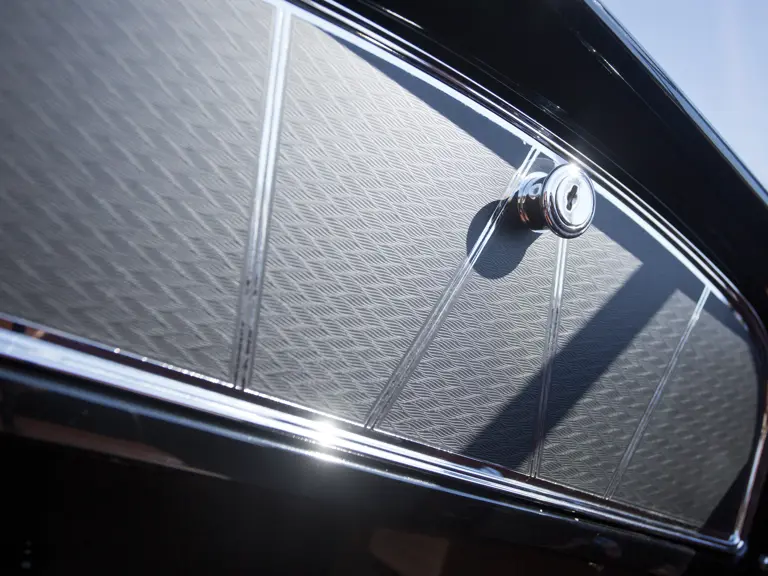
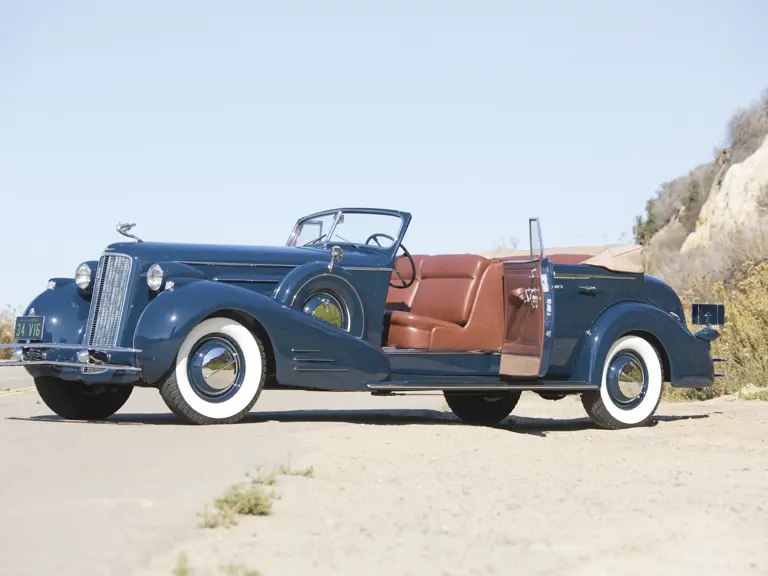
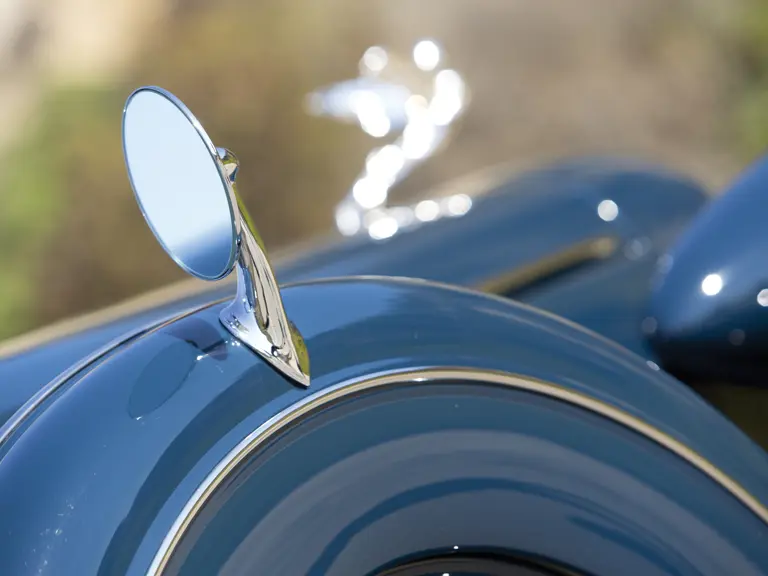
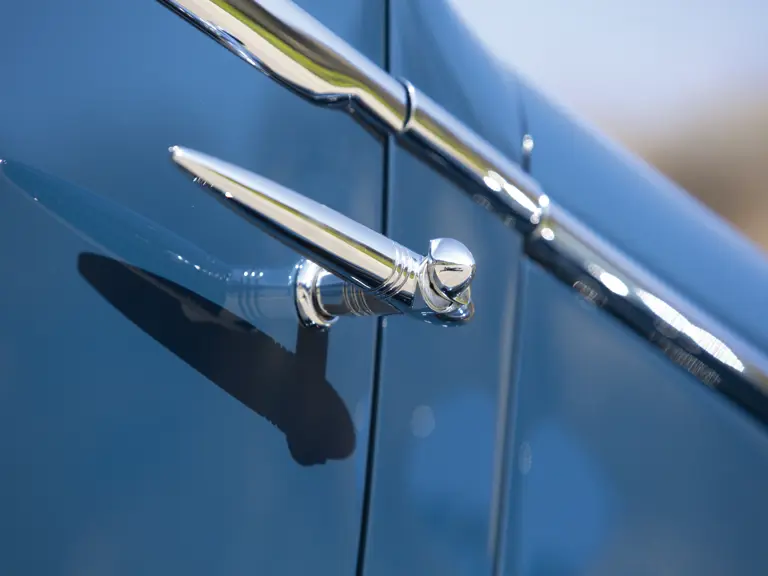

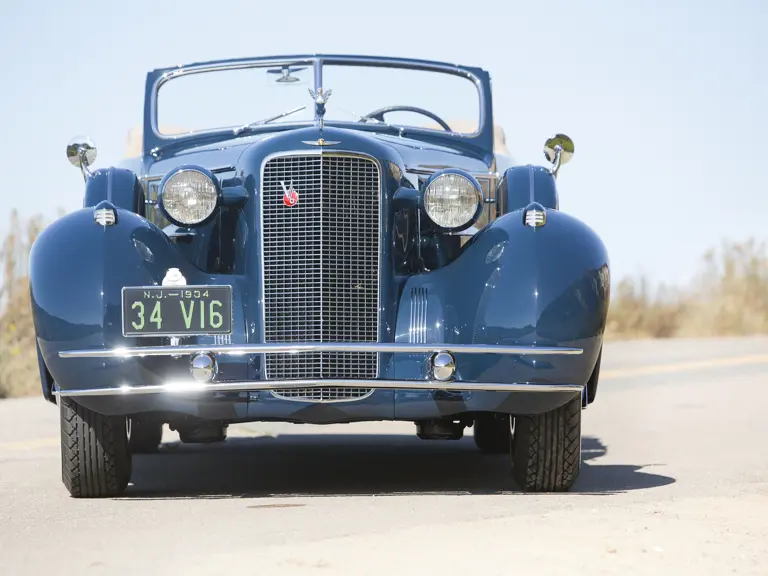
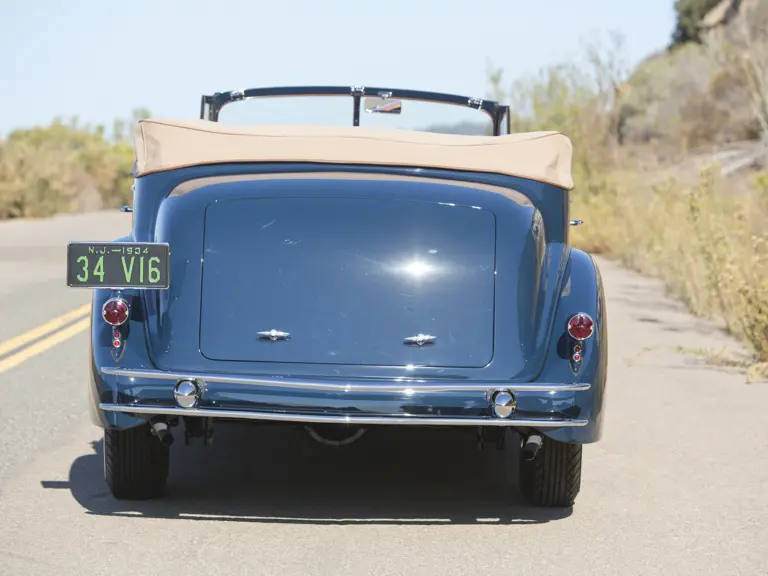
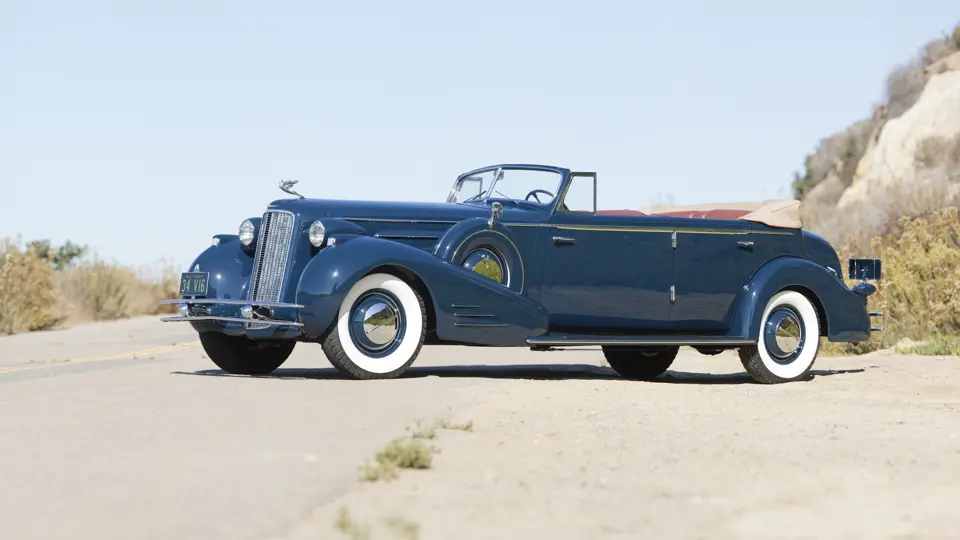
 | Phoenix, Arizona
| Phoenix, Arizona


